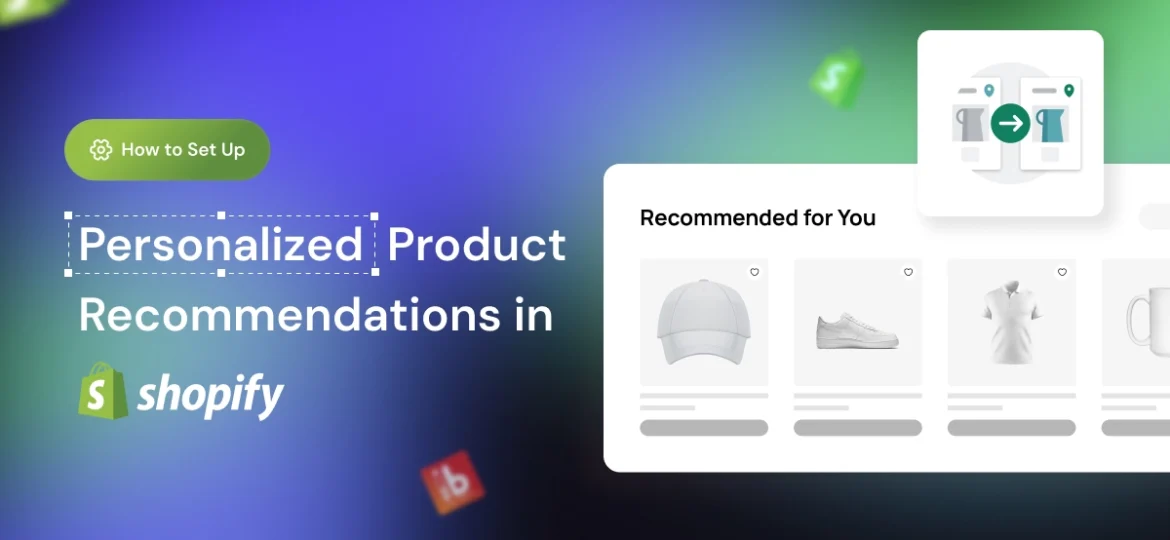
Last Updated on April 11, 2025 by Rakibul Islam
In this age of simplification in the eCommerce industry, personalization is more than just a trend; it’s a necessity. Personalized product recommendations play a crucial role in enhancing user experience, driving engagement, and ultimately increasing sales. In this article we will explore a step-by-step guide tailored specifically for Shopify store owners, helping you set up personalized product recommendations that can transform your store’s performance.
The Benefits of Personalization in Shopify Stores
Personalized product recommendations enhance customer engagement by creating a tailored shopping experience. When customers see products that match their interests, they are more likely to stay on your site longer. Here are a few key benefits:
Increased Conversions
When a customer visits your Shopify store and sees product suggestions tailored to their browsing history and preferences, they are more likely to make a purchase. For instance, if a customer frequently buys skincare products, showing them related items like a face serum or moisturizer can entice them to add those to their cart. According to Epsilon, 80% of consumers are more likely to purchase from brands that offer personalized experiences.
Reduced Cart Abandonment
Cart abandonment is a significant challenge for online retailers. Personalized recommendations can help mitigate this issue. For example, if a customer adds a shirt to their cart but doesn’t complete the purchase, you can remind them by recommending matching items like trousers or accessories. This strategy can prompt them to return to their cart and complete the transaction. By showcasing relevant products, you can keep customers engaged and motivated to finalize their purchase.
Enhanced Customer Engagement

Personalized product recommendations create a sense of connection between the customer and your brand. When customers feel understood and valued, they are more likely to return. For instance, if a customer has purchased a set of kitchen knives, suggesting complementary items like cutting boards or knife sharpeners shows that you understand their needs. This kind of personalized attention fosters loyalty and encourages repeat purchases.
Shopify Apps for Personalization
To effectively add personalized product recommendations to your Shopify store, consider these top apps:
1. Inkybay: Product Personalizer
InkyBay is one of the most demanded product personalization apps in the Shopify App Store, credit goes to the dynamic features and ease of use it offers. The app’s customizable features include changing product colors, adding custom texts, graphics, or logos, and selecting fonts, colors, and sizes. Users can also upload clipart and see a real-time preview of every change made.
Key Features:
1.Customizable Options:
- Change product colors
- Add custom texts, graphics, or logos
- Select fonts, colors, and sizes
- Upload clipart with real-time previews
2. Customer Support: Excellent support with dedicated human agents available 24/7 to resolve any issues from the merchant’s side within the app.
3. Dynamic Pricing: Pricing can be adjusted based on size, color, and added personalization, ensuring clarity for customers about their options.
4. Request Quote Option: Customers can create a design and request a quote directly from the store.
5. Free Trial: There is a 21-day free trial period to test all the features and see if they are a perfect match for the store.
2. Rebuy Personalization Engine
Rebuy’s Personalization Engine offers brands a comprehensive solution to enhance their e-commerce strategy. By integrating proprietary AI/ML technology with modern software and industry-leading integrations, it provides customizable search, merchandising rules, and A/B/n testing.
Key features include:
- AI-powered product recommendations and search capabilities for a seamless user experience.
- The Smart Cart, an AI-powered, customizable cart that offers product recommendations and accelerated checkout processes.
- Engagement tools like post-purchase interactions, re-order landing pages, and smart links.
3. ReConvert: Upsell & Cross-Sell
ReConvert is designed to enhance post-purchase experiences with bundling and one-click upsells, making it a powerful tool for increasing average order value in your business. It allows you to include upsells at several points in the consumer journey, such as the thank-you page and checkout.
Key Features:
- Post-Purchase Upsells:
- Include upsells at the thank-you page
- Enable upsells during checkout
- Segmentation: Tailor upsell offers based on customer segmentation for more effective targeting.
- Drag-and-Drop Funnel Builders: Easily create and customize upsell funnels to optimize your strategy.
- Detailed Statistics: Access detailed analytics to track and improve your upsell performance.
- User-Friendly Interface: The app boasts an easy-to-use interface, ensuring a smooth setup and management process.
- High Conversion Rates: Benefit from high conversion rates to maximize revenue from upsell offers.
A Step-by-Step Guide to Setting Up Personalized Product Recommendations
Step 1: Understand Your Customers
Knowing your clients is the first step towards making personalized product recommendations. The purchasing trend, browsing history and behavior could be a key indicator of knowing your customer better, this will allow you to understand their preferences. You can track this data using tools like Shopify’s built-in analytics and Google Analytics. You may improve your clients’ purchasing experience by making recommendations that are more appealing and relevant if you are aware of their preferences.
Step 2: Choose the Right Shopify App
It is very important to pick the right app for personalized product recommendations. You must look out for apps that match your store’s goals and offer all the features that serve your business needs. For example, the InkyBay product personalizer is robust with all its offerings and can be highly impactful if you’re in the personalized product business. There have been cases where merchants installed the app for a 21-day free trial and have been using it for over 10 years now.
Step 3: Configure Recommendations Settings
Now that you have a perfect match on board, it’s time to set up the app with the recommendation settings. Common recommendation types include “Frequently Bought Together” and “Customers Also Viewed.” You can configure the settings according to customer behavior and preferences. You can recommend complementary or similar items that other customers have purchased. Proper configuration ensures that the recommendations are relevant and useful to your customers.
Step 4: Test and Optimize
What always keeps you in continuous improvement is testing and optimizing the personalized product recommendations. A/B testing is a great way to find the best result, compare different recommendation strategies and identify what works best for you. It is also important to take feedback from your customers, it will help you to understand their pain points and preferences. Regularly monitoring and optimizing your recommendations can lead to better customer engagement and increased sales.
Best Practices for Success
Tips for Effective Product Recommendations
Implementing personalized product recommendations can significantly improve your Shopify store’s performance. Here are some best practices to ensure their success:
1. Personalize Based on User Preferences:
Tailor your recommendations to match individual user preferences. By analyzing data such as browsing history, purchase patterns, and customer behavior, you can offer suggestions that resonate with each customer. This level of personalization makes customers feel valued and understood, increasing their likelihood of making a purchase.
2. Keep Recommendations Dynamic and Relevant:
Ensure that your product recommendations are always up-to-date and relevant. Static recommendations can become outdated and less effective. Use algorithms and AI-powered tools to dynamically update suggestions based on real-time data and changing customer interests. This approach keeps the shopping experience fresh and engaging.
3. Monitor Performance Metrics to Adjust Strategies:
Regularly monitor key performance metrics such as click-through rates, conversion rates, and average order value to gauge the effectiveness of your personalized product recommendations. Use A/B testing to compare different strategies and gather feedback from customers. Based on the insights you gather, make necessary adjustments to optimize your recommendation strategies continuously.
Wrapping up
Implementing personalized product recommendations in your Shopify store can significantly enhance the shopping experience for your customers. By offering tailored suggestions based on their preferences, you can increase engagement, boost conversions, and reduce cart abandonment rates. With the right tools and strategies, you can make your customers feel valued and understood, fostering loyalty and repeat business.

